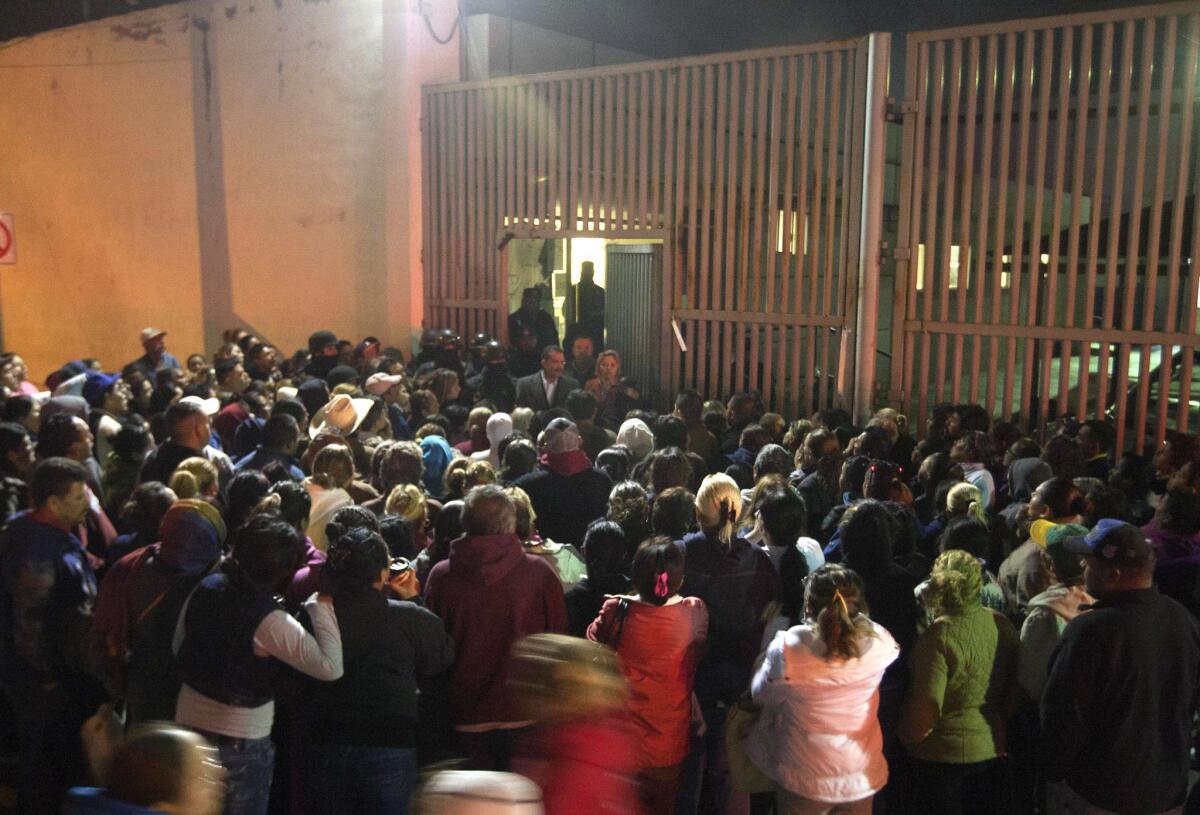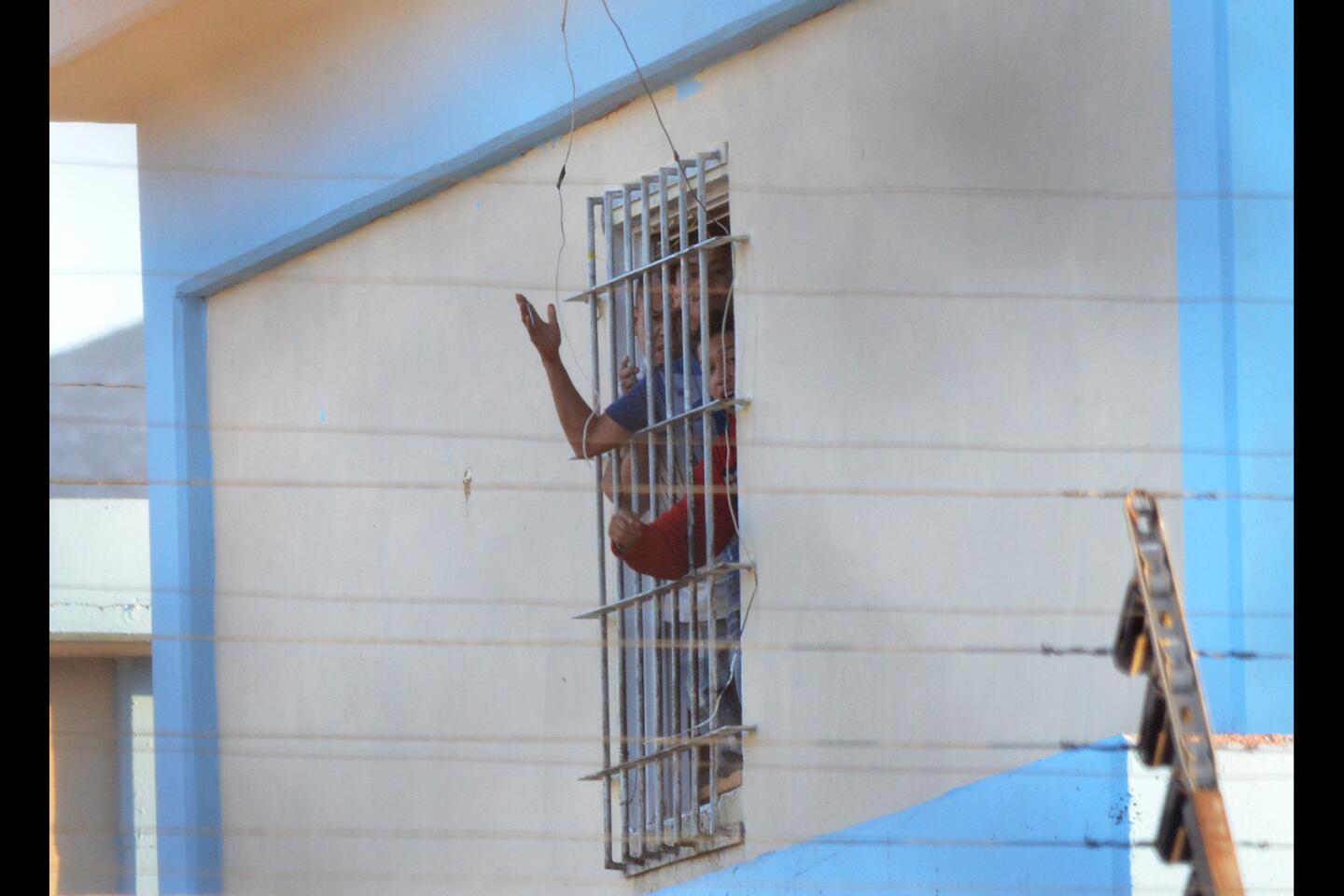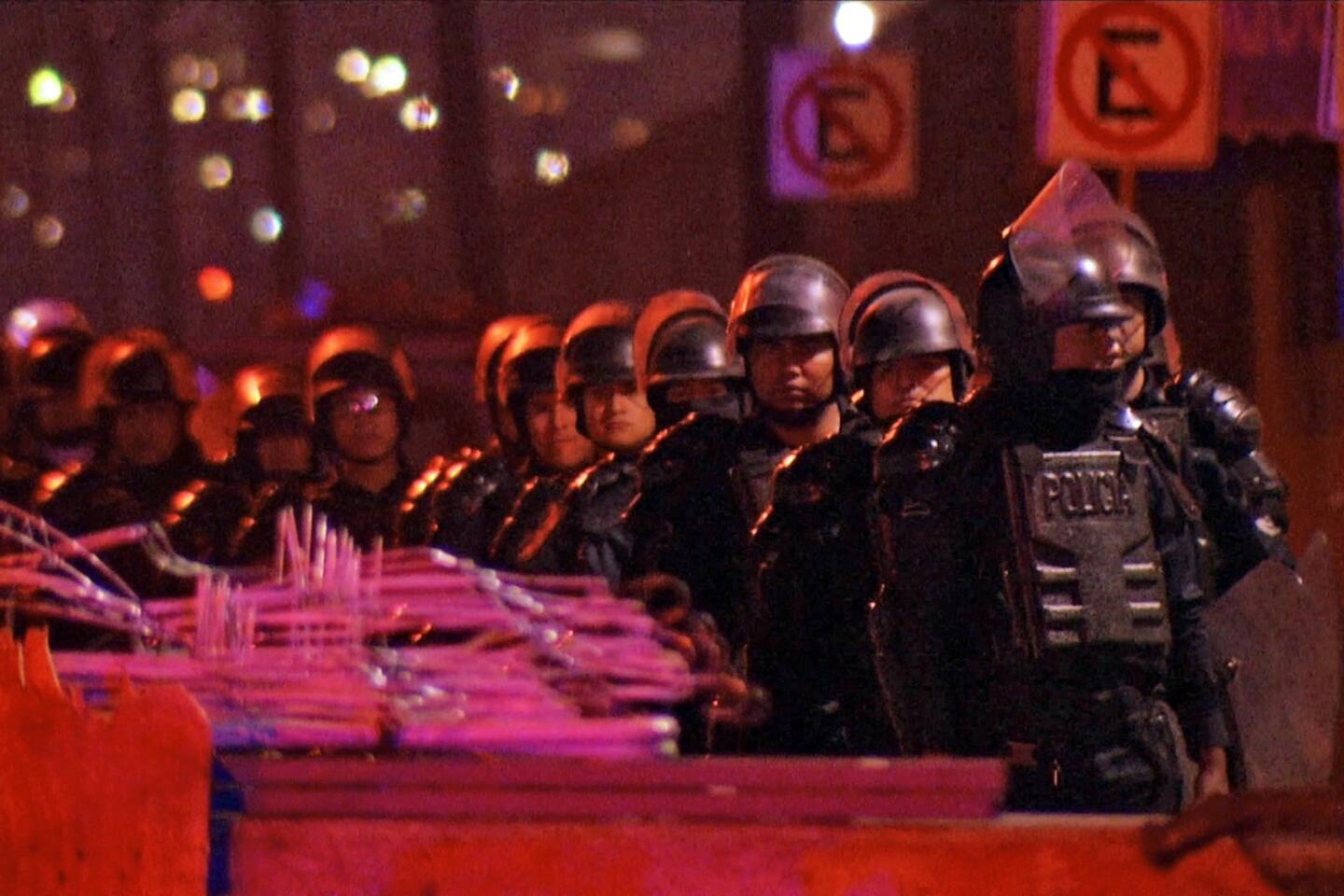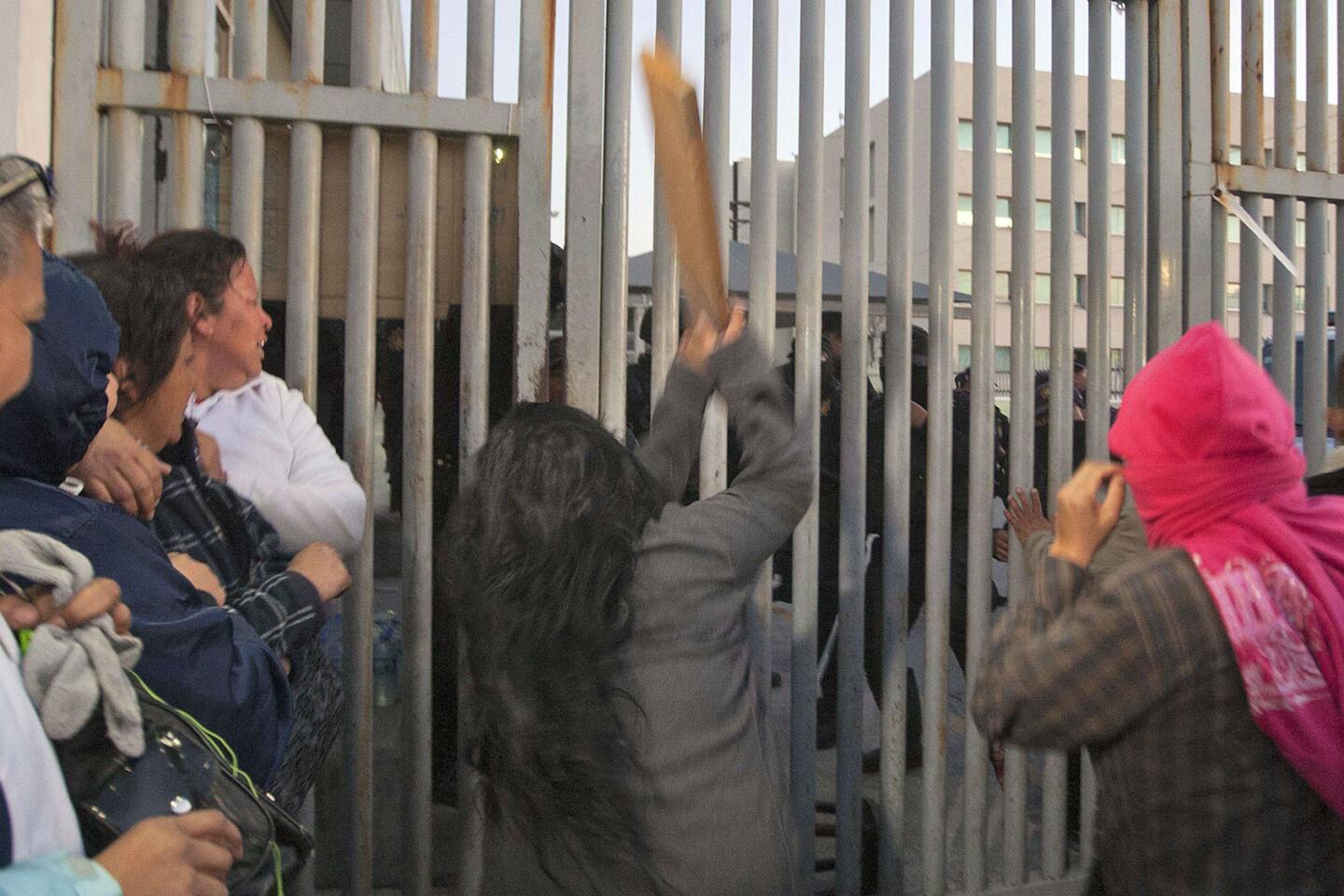Mexican inmates’ kin seek answers after deadly prison riot in Monterrey

Relatives of inmates gather outside the Topo Chico prison in the northern city of Monterrey in Mexico on Feb. 11.
- Share via
Reporting from Mexico City — The families of some prisoners at Topo Chico prison in Monterrey, Mexico, gathered outside the facility Thursday after a brawl left about 50 inmates dead and 12 injured.
In the absence of news about their loved ones, others turned to a local agency, Ciudadanos en Apoyo a los Derechos Humanos, or Citizens in Support of Human Rights, for comfort.
“Every family is going to have to pick up the body of their loved one,” Sister Consuelo Morales, who has visited the prison for years, said in a phone interview from Monterrey. “The families need to start the process of acceptance, to know the truth.”
Officials in Nuevo Leon state said the deadly confrontation between inmates began about 11:30 p.m. Wednesday and continued into early Thursday. The fighting, officials said, involved a dispute between groups led by Jorge Ivan Hernandez Cantu, also known as “El Credo,” who has been identified by news media as a Gulf cartel figure, and Juan Pedro Saldivar Farias, also known as Z-27, who officials said is a member of the Zetas drug cartel. The groups have battled over territory in northern Mexico for years.
Prisoners set some sections of the facility on fire before authorities brought the fighting under control about 1:30 a.m., officials said. By then, Mexican army, marines and police were in place to help maintain order. There were no escapes, officials said.
“The events at the Topo Chico prison are extremely regrettable; we are living a tragedy derived from the situation that we are living with in our penitentiary centers,” said Jaime Rodriguez, the governor of Nuevo Leon.
NEWSLETTER: Get the day’s top headlines from Times Editor Davan Maharaj >>
A crowd of people bundled against the cold had gathered at the prison gates, demanding to be let in to learn the fate of their relatives. Some kicked and shook the gates as riot police with plastic shields kept the crowd out.
“They haven’t told us anything,” said Ernestina, who identified herself as the mother of an inmate but declined to give her full name for fear of reprisal. “They said that until there is order, they won’t let us in. Everything is in disorder, and nobody is telling us anything.”
Sister Morales has seen the conditions in the prison and concluded that gangs have long been in control of the facility, instead of prison guards — and has sounded the alarm to officials because the inmates are at risk.
“If you and I see a problem in the street, we can run,” she said Thursday. “But what happens when you’re inside a prison? The state has to protect you. And they didn’t.”
The prison riot is the second in the span of just a few years in Nuevo Leon. In 2012, 44 inmates were killed and 30 escaped from the prison in Apodaca.
According to a 2014 report by the National Human Rights Commission, Topo Chico was designed to house 3,635 prisoners but held about 4,585 that year. Inmates used violence as a way of exerting control in the prison, it said.
Another report by the commission in 2013 highlighted violence and inmate control in many of Mexico’s prisons, symptoms of corruption and lack of resources.
The report, based on visits and interviews at 101 of the most populated facilities, found that 65 of them were run by inmates, not authorities.
Elena Azaola, an expert on Mexico’s prison system, said in a phone interview that the violence was not surprising.
“They don’t have enough personnel, not enough to control the prison,” Azaola said. “They are not well-trained and do not have the resources they need.”
When one gang holds the control in such a situation, its members are able to hoard food and water, Azaola said. They can get virtually anything they want, including weapons, dogs, drugs and even prostitutes. Meanwhile, other inmates starve.
“I don’t doubt that those inside decided to face [those in control] knowing they would die,” she said, rather than “continue to live in those conditions.”
Tillman is a special correspondent. Special correspondent Cecilia Sanchez in Mexico City and the Associated Press contributed to this report.
ALSO
Retired L.A. Sheriff Lee Baca admits he lied to the FBI in the jail abuse scandal
Five years on, Tahrir Square activists look back at Egypt’s revolution: ‘Maybe we were naive’
Nevada rancher Cliven Bundy arrested as Oregon standoff holdouts say they will surrender
More to Read
Sign up for Essential California
The most important California stories and recommendations in your inbox every morning.
You may occasionally receive promotional content from the Los Angeles Times.














